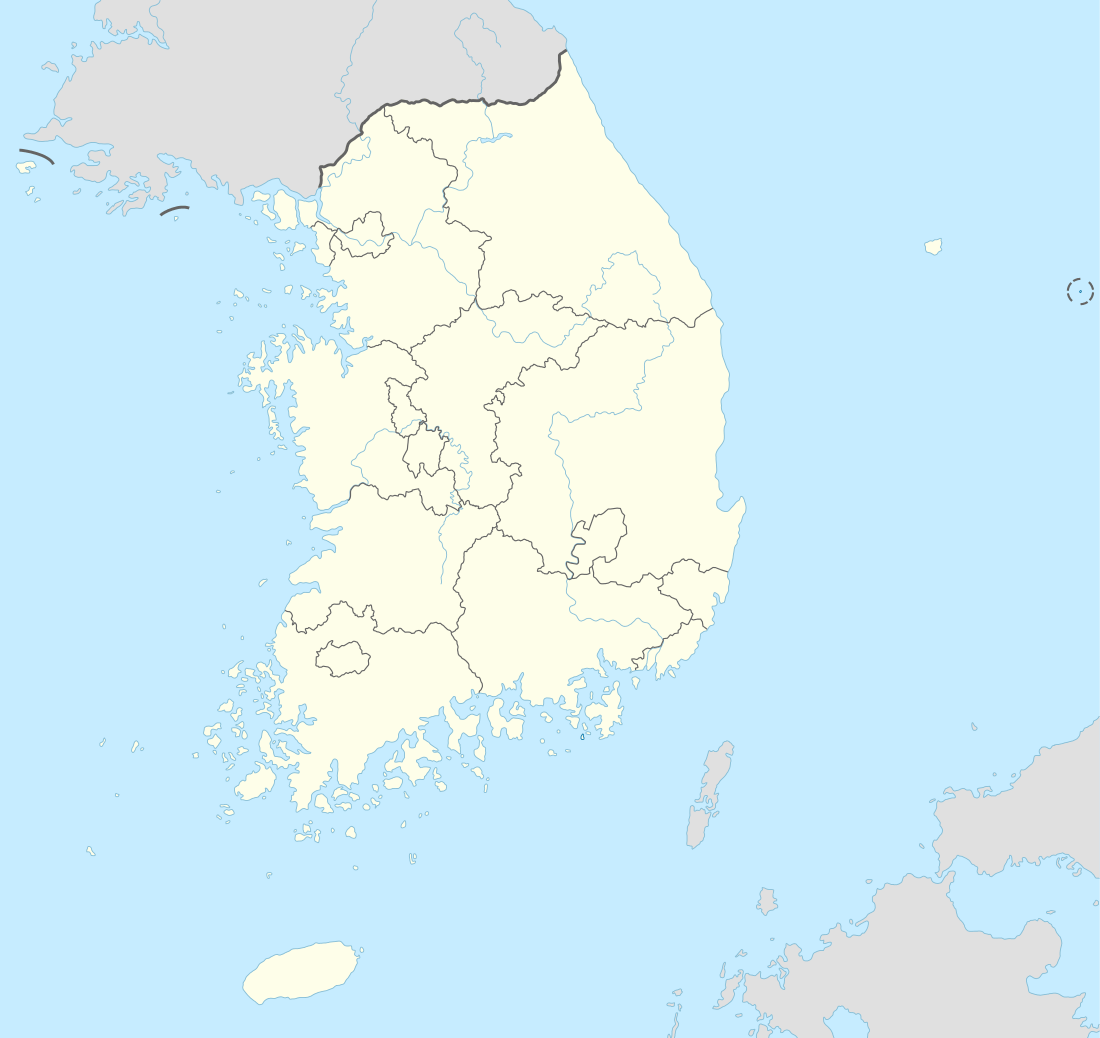Seoul National University
|
서울대학교 | |
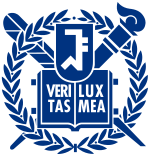 | |
| Latin: Universitas Nationalis Seulensis[1] | |
| Motto | Veritas lux mea (Latin) |
|---|---|
Motto in English | The truth is my light |
| Type | Public |
| Established | 1946 |
| President | Sung Nak-in[2] |
Academic staff | 5,511 (2015)[3]:p. 37 |
| Students | 27,986 (2015)[3] |
| Undergraduates | 16,496[3] |
| Postgraduates | 11,490[3] |
| 3,423[3] | |
| Location | Gwanak, Seoul, South Korea |
| Campus |
Urban, 4.2 km2 (1037 acres) 7.9 km2 (1,960 acres), including the arboreta and other campuses. |
| Colors | blue |
| Affiliations | AEARU, APRU, BESETOHA, ARN, APSIA, AALAU |
| Mascot | Crane, Zelkova Tree[4] |
| Website | www.snu.ac.kr |
 | |
| Seoul National University | |
| Hangul | 서울대학교 |
|---|---|
| Hanja | 서울大學校 |
| Revised Romanization | Seoul Daehakgyo |
| McCune–Reischauer | Sŏul Taehakkyo |
|
Note: The word 首尔大学 (traditional: 首爾大學) is frequently used in many Chinese contexts, as in Chinese Wikipedia. This is, however, not a traditional hanja name, because the Chinese characters used in the word do not represent the Korean sound of the word, but rather the Chinese. Thus it is merely a Chinese transliteration, rendered as Shǒuěr Dàxué in pinyin. Other names such as 汉城国立大学 named after 汉城, the historical Chinese word of Seoul have been used historically in China. | |
Seoul National University (SNU; Hangul: 서울대학교; Hanja: 서울大學校; RR: Seoul Daehakgyo, colloquially Seouldae) is a national research university located in Seoul, South Korea.
Founded in 1946, Seoul National University is considered to be the most prestigious university in the country.[5] The university has three campuses: the main campus in Gwanak and two additional campuses in Daehangno and Pyeongchang. The university comprises sixteen colleges, one graduate school and nine professional schools. The student body consists of nearly 17,000 undergraduate and 11,000 graduate students. According to data compiled by KEDI, the university spends more on its students per capita than any other university in the country that enrolls at least 10,000 students.[6]
Seoul National University holds a memorandum of understanding with over 700 academic institutions in 40 countries,[7] the World Bank[8] and a general academic exchange program with the University of Pennsylvania.[9] The Graduate School of Business offers dual master's degrees with Duke University, ESSEC Business School and Peking University, double-degrees with the MIT Sloan School of Management and Yale School of Management[10] and MBA-, MS- and PhD-candidate exchange programs with universities in ten countries on four continents.[11] Following a government mandate to globalize Korean universities, the university's international faculty head count peaked at 242 or 4% of the total in 2010, but subsequently declined.[12]
Seoul National University, or its undergraduate liberal arts college in particular, finds its roots in Keijo Imperial University, one of the Imperial Universities founded by the Japanese Empire. In the 1940s, with US Military Ordinance No.102 of United States Army Military Government in Korea, Keijo Imperial University was abolished. Later the Government of Republic of Korea merged the remaining part with various colleges and professional schools, and the consolidated institution was renamed as Seoul National University in accordance with the Act of the National University Seoul enacted in the National Assembly.
Pre-establishment
Seoul National University originates from various educational institutions established by King Gojong of the Joseon Dynasty. Several of them were integrated into various colleges when later Seoul National University was founded.
To modernize the country, Gojong initiated the establishment of modern higher education institutions. By means of the issue of a royal order, the law academy Beopkwan Yangseongso has been founded in 1895. It produced 209 graduates including the later envoy Yi Tjoune. Hanseong Sabeomhakgyo (established in 1895), a training school for teachers and Euihakkyo (1899), a medical school, are also considered the origins of respected colleges.
After the proclamation of the Empire of Korea in 1897, Gojong, meanwhile emperor, was motivated to create more modern education institutions. In 1899, a medical school was established. This school changed its name several times to Daehan Euiwon Gyoyukbu and Gyeongseong Euihak Jeonmunhakgyo (Gyeongseong Medical College) and finally became College of Medicine of Seoul National University. In 1901, a department for nursing was established, which was the forerunner of the later College of Nursing.
During the Japanese rule, Keijō Imperial University was established as one of Japan's nine imperial universities. After World War II and the independence of Korea, the name of the university was changed from Keijō Teikoku Daigaku (京城帝国大学) to Gyeongseong Daehak (경성대학, 京城大學, Gyeongseong University). The Hanja letters, that were used in the name, were pronounced in the Korean reading and the attribute "Imperial" was removed. The renaming of "National" was based on the academic nationalism supported by the US military regime in Korea at the time.
Establishment
Seoul National University was founded on August 27, 1946 by merging ten institutions of higher education around the Seoul area. The schools which have been merged were:
- Gyeongseong University (Gyeongseong Daehakgyo, 경성대학)
- Gyeongseong College of Education (Gyeongseong Sabeomhakgyo, 경성사범학교)
- Gyeongseong Women's College of Education (Gyeongseong Yeoja Sabeomhakgyo, 경성여자사범학교)
- Gyeongseong Law College (Gyeongseong Beophak Jeonmunhakgyo, 경성법학전문학교)
- Gyeongseong Industrial College (Gyeongseong Gongeop Jeonmunhakgyo, 경성공업전문학교)
- Gyeongseong Mining College (Gyeongseong Gwangsan Jeonmunhakgyo, 경성광산전문학교)
- Gyeongseong Medical College (Gyeongseong Euihak Jeonmunhakgyo, 경성의학전문학교)
- Suwon Agriculture College (Suwon Nongnim Jeonmunhakgyo, 수원농림전문학교)
- Gyeongseong College of Economics (Gyeongseong Gyeongje Jeonmunhakgyo, 경성경제전문학교)
- Gyeongseong Dentistry College (Gyeongseong Chigwa Euihak Jeonmunhakgyo, 경성치과의학전문학교)
The first president was Harry Bidwell Ansted.[13] For over a year and a half, there was a protest movement by students and professors against the law of the U.S. military government in Korea merging colleges. Finally, 320 professors were fired and more than 4950 students left the school. The university's second president was Lee Choon-ho (이춘호, 李春昊), who served beginning in October 1947.
The College of Law was founded by merging the law department of Kyŏngsŏng University with Kyŏngsŏng Law College. The university absorbed Seoul College of Pharmacy in September 1950, as the College of Pharmacy. This had previously been a private institution.[14]
During the Korean War, the university was occupied by North Korea and Seoul National University Hospital massacre occurred,[15] then temporarily merged with other universities in South Korea, located in Busan.
Relocation
Originally, the main campus (which embraced the College of Humanities and Sciences and College of Law) was in Dongsung-dong, Jongno. After the construction of a new main campus in Gwanak in February 1975, most colleges of the university relocated to the new Gwanak Campus between 1975 and 1979. Part of the former main campus in Jongno is still used by the College of Medicine, the College of Dentistry and the College of Nursing and is now called Yeongeon Campus.
In 2012 lawmakers reported that the ruling Saenuri Party, ahead of the December presidential elections, seriously proposed a plan to relocate the university to the newly established special autonomous Sejong City.[16] The move came as part of an overall effort to decentralize the capital's governmental apparatus. Originally the national government had approached the university in 2009 to host the building of a satellite campus.[17][18] It was reported the following year that the university had considered withdrawing from the Sejong plan.[19]
Academics
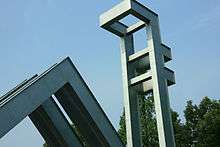
Admissions
Admissions to Seoul National University is extremely competitive. From 1981 to 1987, when an applicant could apply only to one university at a time, more than 80% of the top 0.5% scorers in the annual government-administered scholastic achievement test applied to SNU and many of them were unsuccessful.
Academic structure
Sixteen colleges of the university offer 83 undergraduate degree programs.[20] For master and doctoral programs there is one graduate school with 99 programs from five fields of studies. The interdisciplinary programs are the ones invented and operated by more than two departments.[21] In addition to that, there are nine professional graduate schools.[22]
Campus
Seoul National University occupies two Seoul-based, one Pyeong Chang-based campuses: the Gwanak Campus is situated in 1 Gwanak-ro, Gwanak-gu; and the Yongon Campus is north of the Han River in Daehangno, Jongno District; and the new Pyeong Chang campus in Pyeongchang-gun, Gangwon-do.
Location
Gwanak Campus, the main campus, is located in the southern part of Seoul. It is served by its own subway station on Line 2. Yeongeon Campus, the medical campus, is on Daehangno (University Street), northeast Seoul. The defunct Suwon Campus, the agricultural campus, also known as the Sangnok Campus (Evergreen Campus), used to be located in Suwon, about 40 km south of Seoul. The agricultural campus moved to Gwanak in Autumn 2004, but some research facilities still remain in Suwon.
New plans
In February 2010 Seoul National initiated a memorandum with the city of Siheung to establish a global campus. Signed with the city's mayor and governor of Gyeonggi for administrative assistance, the university acquired 826 thousand square meters (204 acres) of property in the west-coast economic zone, near the Songdo International Business District, Pyeongtaek harbor, international airport, seaport.[23]
The land acquisition will increase the university's size by 58% over its current 1.4 million square meters (350 acres) to 2.2 million square meters (550 acres) and headcount by an expected 10,000 people or 33% of its current figure.[24] Along with lecture halls and additional liberal arts and graduate courses, the initiative will add a medical complex including a research hospital and training centre, research centre for dentistry and clinical pharmacology, dormitories, apartments, an international middle and high school, and other facilities. Planning to open the international campus in 2014, the university intends to share the initiative with other regional national institutions.[25]
Facilities
Library
Seoul National University Library[26] is located behind the university administrative building in the 62nd block of the Gwanak Campus. In 2009, the library’s collection of books, including all the annexes, was 4 million volumes. The chief librarian, Dr. Kim Jong-seo, professor of religious studies in the College of Humanities, took office in 2009.
The Central Library has constructed a digital library, which in addition to the regular library collection provides access to university publications, ancient texts, and theses. Included here are images of pamphlets, lecture slides, and insects. The digital library offers access to video of university exhibitions, scientific events, symposia, and seminars.
The library was opened in 1946 as the Seoul National University Central Library, inheriting its facilities and books from Kyungsung University. In 1949, the name of the library was changed to the Seoul National University Library Annex. When the main branch of the library was relocated to the Gwanak Campus in January 1975, it was renamed the Seoul National University Library, and then renamed again in 1992 the Seoul National University Central Library.
In 1966, provisions were made to systematize the library's collections. The original library was organized into 12 annexes for each of the university’s colleges: engineering, education, physics, art, law, theology, pharmacology, music, medicine, dentistry, administration, and agricultural sciences. Two years later, in 1968, libraries for newspapers and the liberal arts were added to bring the number of annexes to 14. However, as the main branch was moved to the Gwanak Campus, the education, physics, legal, theological, administrative, newspaper, liberal arts, and pharmacological libraries were combined in a single building.
The library has received contributions from seven university libraries (Columbia, Harvard, Hong Kong, Leiden, Michigan, Stockholm, Toronto), three universities (Ohio State, Princeton, and UCLA), three major libraries (Fung Ping Shan Library, Library of Congress, New York Public Library), four institutions (German Research Association, Pro Helvetia Switzerland, Smithsonian Institution, and World Bank), two government agencies (US Information Service and US Operation Mission), the government of Australia, and from private Korean and non-Korean donors. The library underwent significant expansion in 2014.
Kyujanggak
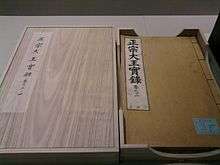
The Kyujanggak, also known as Gyujanggak, was the royal library of the Joseon Dynasty. It was founded in 1776 by order of King Jeongjo of Joseon, at which time it was located on the grounds of Changdeokgung Palace. Today known as Kyujanggak Royal Library or Kyujanggak Archives are maintained by Kyujanggak Institute for Korean Studies[27] (규장각한국학연구원, Gyujanggak-Hangukhak-Yeonguwon) at the Seoul National University. It functions as a key repository of Korean historical records and a centre for research and publication of the annual journal Kyujanggak.[28]
Museum
Seoul National University Museum[29] is located at the Gwanak Campus. It opened alongside the university in 1946 under the name "The Seoul National University Museum Annex." The original two-story Dongsung-dong building, which was erected in 1941, had served as the Kyungsung Imperial University Museum until it was transferred intact to SNU. When the museum was moved to the sixth floor of the Central Library, in 1975, it was renamed the Seoul National University Museum. The museum was then moved to newly constructed facilities, next to the Dongwon Building, in 1993, which it has occupied to this day. Dr. Park Nak-gyu is its director.
Museum of Art

Seoul National University Museum of Art (SNUMoA) was established in 1995 with contributions from the Samsung Cultural Foundation after a proposal from Dr. Lee Jong-sang, a professor of Oriental Art. The building was designed by Dutch architect Rem Koolhaas, with construction entrusted to the Samsung Group. The 4,450 square metres (47,900 sq ft) structure lies three stories above and below ground, with its major distinguishing feature, the forward area, cantilevering off the ground. Construction lasted from 2003 to 2005, and the museum opened on June 8, 2006. Dr. Jung Hung-min assumed directorship of the gallery in 2006.[30]
Dormitory
The dormitory of Seoul National University is named Gwanaksa[31] (관악사). Dormitories for undergraduate and graduate students as well as families are located here. It was founded August 1975, with five Gwanaksa buildings and one welfare building, which housed 970 male students. The female dormitory was founded in February 1983. By June 2007, there were one administration building, two welfare buildings, 12 undergraduate dormitory buildings, six graduate students’ dormitory buildings, which in total housed 3,680 students. Unlike other schools, there is no curfew hour.
The Yeongeonsa located in Yeongeon campus, which is the medical school of Seoul National University. The Yeongeonsa can house 533 undergraduate students, and 17 household of family dormitory.
University Newspaper
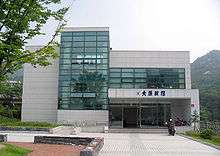
The University Newspaper[32] (대학신문, Daehak-Sinmun) is the students' press of Seoul National University. The first edition of the paper was launched while seeking refuge from the ravages of the Korean War, on February 4, 1952. In 1953 it was moved to Dongsung-dong in Seoul, where from 1958 even editions for high school were published. Financial difficulties in 1960 led the paper to cease printing for a time. It was relocated to the Gwanak Campus in 1975, where it has been in continuous publication until the present day.[33] At the time of its first launch the paper was sold for 500 won a copy, sometimes twice a week. Now, however, it is distributed for free every Monday. The school paper is not available during schools breaks or exams.
Reputation and rankings

Reputation
A KEDI study found that the university's name-value translates into wages that are on average about 12 percent higher than that of any other Korean university.[34] SNU graduates dominate South Korea's academics, government, politics and business. Approximately one in four Korean university presidents studied for their undergraduate degree at Seoul National University.[35] Between 2003 and 2009, more students who graduated from science high schools and received presidential scholarships matriculated at Seoul National University than at eight other leading universities combined.[36] The concentration of SNU graduates in legal, official, and political circles is particularly high.
International rankings
| University rankings | |
|---|---|
| Global | |
| ARWU World[37] | 101–150 |
| Times World[38] | 74 |
| QS World[39] | 36 |
| Regional | |
| Times Asia[40] | 9 |
| QS Asia[41] | 10 |
In 2015, Thomson-Reuters ranked Seoul National University as the 31st most innovative institution in the world.[42] QS World University Rankings (2016) considers it 35th in the world and 10th in Asia [33, 36], whilst it was 4th in the independent regional QS Asian University Rankings (2013).[43] SNU was 9th in Asia and 85th in the world by the 2016 Times Higher Education World University Rankings [32, 35]. In 2014-2015, its World Reputation Rankings were considered it to be 26th globally.[44] Moreover, ARWU (2015) regarded SNU to be among 101st-150th worldwide and the best in the country.[45] CWUR 2016 ranks Seoul National University as 24th best in the world.[46]
QS University Subject Rankings (2015):[47] 16th, modern languages; 17th, pharmacy & pharmacology; 19th, architecture, chemical engineering; 21st, materials science, chemistry; 24th, civil & structural engineering; 27th, dentistry, 30th, mechanical engineering; 31st, electrical & electronic engineering; 32nd, sociology; 33rd, business & management studies; 36th, politics & international studies; 41st, law & legal studies, linguistics, physics & astronomy, veterinary science; 42nd, computer science & information systems; 43rd, accounting & finance; 46th, statistics & operational research; 47th, art & design; 48th, medicine; 49th, mathematics; 50th, history & archaeology.
The institute was ranked 20th in publications by a 2008 analysis of data from the Science Citation Index,[48] and the following year ranked 8th in the world in clinical trials.[49] In 2011, the Mines ParisTech : Professional Ranking World Universities reported that Seoul National University is ranked 10th in the world in terms of the number of alumni holding CEO positions in Fortune 500 enterprises.[50] Seoul National University also had the third highest number of students who went on to earn Ph.Ds in American institutions in 2006.[51]
Controversies
There are issues concerning diversity and discrimination against foreign professors at SNU.[52] There was an effort to recruit foreign professors for several years from 2009 onwards, with numbers peaking at 242 or 4% of the total.[12] This number has declined, with a large proportion of the newer 'foreign' recruits actually being former Korean nationals who have adopted non-Korean citizenship.[12] Many of the earlier batch of foreign professors left after complaining of discrimination against them, sometimes without even giving notice.[52] SNU attempts to boost its international reputation by offering contracts to Nobel laureates, but they are mostly retired and holding other academic posts elsewhere, rarely on campus and sometimes leave before their contracts run out.[52]
Notable alumni and faculty
Among its notable alumni are prominent figures in international organizations and businesses such as Ban Ki-moon, the eighth Secretary-General of the United Nations (UN), Hoesung Lee, Chairman of the Intergovernmental Panel on Climate Change (IPCC), Song Sang-hyun, former President of the International Criminal Court (ICC), Lee Jong-wook, former Director-General of the World Health Organization (WHO), O-Gon Kwon, former Vice President and Permanent Judge in the International Criminal Tribunal for the former Yugoslavia (ICTY), and Kwon Oh-hyun, CEO and chairman of Samsung Electronics.
Also included are academics such as Cambridge University economist Ha-Joon Chang, Seoul National University biochemist and microbiologist V. Narry Kim, as well as artists such as soprano Sumi Jo and sculptor/installation artist Do-ho Suh.
Kang-Tae Kim (Hangul: 김강태; 1957 ~) is a South Korean mathematician, and a professor of mathematics at Pohang University of Science and Technology. Bong-Ho Son (孫鳳鎬; born 1938) is a South Korean Christian ethics scholar and social activist.
In the media
The campus was used as a filming location for Seoul Broadcasting System's 2008 drama Star's Lover. It was used as the university of Kim Chul Soo's, played by Yoo Ji-tae, employment, his lectures and Lee Ma-ri's, played by Choi Ji-woo, visit to the school. Locations used included the gallery, Kyujanggak, and museum roads. This is the first time the university has allowed its campus to be used as a filming location.[53]
In May 2015, the 185th trip of the famous Korean variety show 2 Days & 1 Night advertised the university by holding various tasks on the university campus in the shows very own fashion.[54]
In the hit 2016 tvN Korean drama Reply 1988, Ryu Hye-young who played Sung Bo-ra in the drama portrays a Seoul National University student majoring in Education.[55]
See also
Notes and references
- ↑ "Website of Roman Law Study Group" (in Korean). College of Law, Seoul National University. Archived from the original on October 20, 2007. Retrieved July 28, 2007.
- ↑ "President of Seoul National University". Seoul National University. Retrieved June 2, 2015.
- 1 2 3 4 5 "Facts about SNU" (PDF). Seoul National University. Retrieved January 25, 2016.
- ↑ the symbols of SNU
- ↑ Handbook of Comparative Higher Education Law. Retrieved 15 July 2015.
- ↑ "Best Investment to SNU Students". Useoul.edu. 2010-01-03. Retrieved 2011-02-20.
- ↑ "SNU in the World: International partnerships". USeoul.edu Website. Archived from the original on 2011-05-22. Retrieved 2011-04-17.
- ↑ Oh, Jung-eun (9 May 2013). "SNU and World Bank Sign MOU – A Cooperation Between Two Giants". USeoul.edu. Seoul National University. Retrieved 18 May 2013.
- ↑ "Academic Exchange Agreement Concluded with the University of Pennsylvania". USeoul.edu Website. Retrieved 2011-07-05.
- ↑ "Media Coverage April 25, 2012". USeoul.edu Website. Retrieved 2012-05-07.
- ↑ "Partner Schools for Exchange Student Program". USeoul.edu Website. Archived from the original on 2011-03-18. Retrieved 2011-04-22.
- 1 2 3 "Faculty listing as of 1 April 2010". USeoul.edu Website. Retrieved 2011-12-02.
- ↑ SEOUL NATIONAL UNIVERSITY. "1st Harry B. ANSTED - History of Office - President's Office - About SNU - SNU". Retrieved 15 July 2015.
- ↑ "History of the College of Pharmacy". SNU College of Pharmacy website. Retrieved July 24, 2005.
- ↑ "서울대병원, 6.25전쟁 참전 용사들을 위한 추모제 가져". Seoul National University Hospital. 2010-06-04. Archived from the original on 2013-01-20. Retrieved 2012-07-22.
- ↑ "Ruling party pushes to move top university out of Seoul to Sejong". Yonhap News. 24 September 2012. Retrieved 9 February 2013.
- ↑ "Seoul Nat`l Univ. Asked to Build 2nd Campus in Sejong City". Donga Ilbo. 21 November 2009. Retrieved 9 February 2013.
- ↑ "Sejong City Now Slated as Education, Science Hub". Chosun Ilbo. 24 November 2009. Retrieved 9 February 2013.
- ↑ Kang, Shin-who (27 June 2010). "University campuses in Sejong City unlikely". Korea Times. Retrieved 9 February 2013.
- ↑ SEOUL NATIONAL UNIVERSITY. "Undergraduate". Retrieved 15 July 2015.
- ↑ SEOUL NATIONAL UNIVERSITY. "Graduate". Retrieved 15 July 2015.
- ↑ SEOUL NATIONAL UNIVERSITY. "Professional Graduate Schools". Retrieved 15 July 2015.
- ↑ Kim, Yea-rim (2011-03-16). "Siheung is on the Road to Becoming Korea's Investment Mecca". koreatimes.com. Retrieved 2011-05-05.
- ↑ Chung, Young-jin (2010-02-12). "Plans under way for new SNU branch in Siheung". joongangdaily.joins.com. Retrieved 2011-05-05.
- ↑ Yoo, Min-seok (2011-01-25). "SNU To Share Siheung International Campus with Regional Universities". useoul.edu. Archived from the original on 2011-10-06. Retrieved 2011-05-05.
- ↑ Seoul National University Library
- ↑ Kyujanggak Institute for Korean Studies
- ↑ "History: Kyujanggak". Kyujanggak Institute for Korean Studies. Retrieved 24 April 2012.
- ↑ Seoul National University Museum
- ↑ SNUMoA
- ↑ Gwanaksa
- ↑ The University Newspaper
- ↑ the history of the University Newspaper
- ↑ Han, Dongsook; Bae, Kwangbin; Sohn, Hosung (2012). "Estimating the university prestige effect in South Korea's labor market". KEDI Journal of Educational Policy. Korean Education Development Institute. 9 (2): 383–396. Retrieved 14 May 2013.
- ↑ Shin, Ha-young (20 December 2013). "나는 총장이다대학의 별 총장…서울대 출신 24.3% 최다 (Nearly 1 in 4 Korean University Presidents are SNU Alumni)". E Daily. Retrieved 9 January 2013.
- ↑ Kang, Shin-who (30 May 2010). "Science High Schools Dominate Scholarship". Korea Times. Korea Times. Retrieved 11 November 2010.
- ↑ Academic Ranking of World Universities 2017
- ↑ World University Rankings 2018
- ↑ QS World University Rankings 2019
- ↑ Asia University Rankings 2017
- ↑ QS Asian University Rankings 2016
- ↑ Ewalt, David (September 15, 2015). "The World's Most Innovative Universities". reuters.com. Thomson-Reuters. Retrieved November 13, 2015.
- ↑ "QS Asian University Rankings: Overall in 2013". Quacquarelli Symonds. 2013. Retrieved 2013-06-12.
- ↑ "THE World Reputation Rankings 2012-13".
- ↑ "ARWUU 2012". Shanghai Jiaotong University. 2012. Archived from the original on 2013-06-11. Retrieved 2013-06-03.
- ↑ http://www.cwur.org/2016.php
- ↑ "QS World University Rankings: Seoul National University Rankings". QS World University Rankings. Retrieved 29 May 2013.
- ↑ "Facts". Useoul.edu. 2011-12-02. Retrieved 2011-12-02.
- ↑ "Seoul National University College of Medicine: World Ranking". Seoul National University. Archived from the original on 2011-04-01. Retrieved 2013-07-09.
- ↑ Won, Pia (2009-07-16). "SNU Ranked World's Top 5th in Producing Global CEOs". Useoul.edu. Retrieved 2009-08-19.
- ↑ "Graduates of Chinese Universities Take the Lead in Earning American Ph.D.'s". The Chronicle of Higher Education. Retrieved 15 July 2015.
- 1 2 3 "Why are foreign academics running away?". The Chosun Ilbo. 24 December 2013. Retrieved 27 October 2016.
- ↑ "A Star's Lover". Korean TV Drama. Korea Tourism Organization. Retrieved 30 May 2012.
- ↑ "'Trip 185 Part 1 on YouTube'".
- ↑ "'Reply 1988' Ryu Hye-young, what's your identity".
Further reading
- Seoul National University, "서울대학교 40년사"(The 40 years history of Seoul National University), 1986.
External links
| Wikimedia Commons has media related to Seoul National University. |
- Seoul National University English website
- SNULIFE, SNU students' portal site
- Gwanaksa, students' dormitory of Gwanak Campus
- Central Library, Official library
- University newspaper
- Seoul National University Foundation, Korean website
- Seoul National University Foundation, English website
- Seoul National University Foundation, Inc., USA, Korean website
- Seoul National University Foundation, Inc., USA, English website
- Kyujanggak Institute for Korean Studies official website
